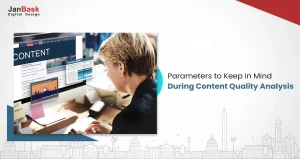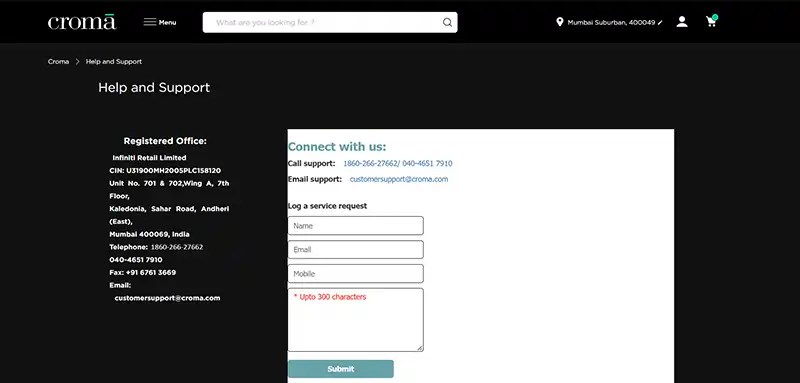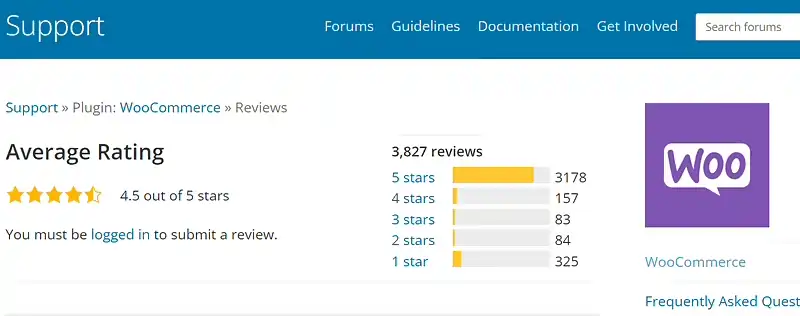
If you want to be successful in today's market, you'll need to establish a digital presence. While most of the big players have carved out a niche with a strong online presence, a lack of funds forces others to fall behind. Small businesses and start-ups are especially wary of investing in websites because of their limited budgets.
Are you one of those businesses planning to go online but unsure about how to proceed with it?
Don’t worry!
We have got you covered on how to make a website for a small business. When it comes to creating a small business website, it's no longer difficult to do so on your own.
We'll walk you through the process of how to make a small business website in this article.
In order to design a website, you need to know what the users want, from the broadest statement of the underlying principle to the site's current and future goals. During this brainstorming phase, everyone who will be involved in the design of your e-commerce site must think about what the site must accomplish and how it must accomplish it.
As a result, some of these questions necessitate a thorough understanding of how and why your site sells its products. At the same time, it's critical to recognize and research your competition to see if it has any impact on the design of your website.
Let us look at why having a website is a must for a small business:

Before you learn how to start a website for a small business, you need to understand a few things. First things first, there is no one-size-fits-all solution when it comes to designing a website. In order to make use of design elements and tools and achieve your objectives, you must first consider what you want to accomplish.
Ask yourself these questions before you begin building your small business website:
There is a lot more attention paid to online businesses than to local businesses that rely on in-person sales. Your website's needs in this area will determine which platforms and hosting providers are best suited for you.
Many of the challenges of building a small business eCommerce site can be avoided if you have the right team in place and the right processes in place. During the course of your project's milestones, it moves from a concept to a working product that generates revenue for your business online.
So let us go step-by-step process of how to create a small business website.
There are a plethora of website builders available to assist you in launching your website. Some website builders require you to have a working knowledge of HTML and CSS, while others do all the heavy lifting for you.
The best option is to go with a solution that allows you to build a website without any prior knowledge of coding.
WordPress: WordPress comes in two versions- free and paid. We'll concentrate on WordPress.org because it provides the most robust features and gives you greater control over your website's appearance and content.
Third-Party Website Builders: Consider using a reputable website builder if you prefer an all-in-one solution. A drag-and-drop tool is used to customize these platforms' pre-built website designs. You won't have to rely on a third-party provider for hosting, but your design options will be limited. You won't have to rely on a third-party provider for hosting, but your design options will be limited.
Hosted website builders' prices vary according to the plan you select. WordPress, on the other hand, is an open-source project, which means that it is free to download. However, finding a web hosting provider will be your responsibility and incur additional costs.
Your company needs a domain name if you want to establish credibility online and convince customers that you are the real deal. In addition to protecting your brand, having a domain name can help you rank higher in search engine results.
Consider your domain name to be an online equivalent of your physical address. What people will find about you on the internet is determined by your online presence.
Be as specific as possible when choosing a domain name. To keep customers coming back, make sure the domain is easy to find and the name is easy to remember.
Numbers, hyphens, and abbreviations should be avoided when registering a domain name. And, of course, you should always check to see if the domain name you want is available for purchase! Even if you've already taken all of the social media usernames for a domain name, finding out that it's already taken is the worst thing that can happen to you.
There are several online generators that can provide you with some inspiration if you're unsure of the name you should choose.
This step isn't necessary for you unless you're using an all-in-one website builder. But while you are going on about how to create a free small business website, there are chances that WordPress is your go-to choice. So keep reading if you're a WordPress user.
There are a number of excellent beginner-friendly web hosts out there. They provide the following services:
You will be prompted to enter your personal information, such as your name, address, and email address after you have selected your domain name. You can skip this step if you prefer to use an all-in-one website builder. However, if you want to use WordPress and a hosting company, you'll have to set up the Content Management System (CMS).
You'll find some additional hosting options down there that you can buy. Unchecking these options is a good idea because we don't recommend purchasing them immediately. If you need them, you can always add them later. You'll need to enter your credit card information to complete the purchase.
You'll receive an email with instructions on how to log into your web hosting control panel after making a purchase. You'll be able to access your WordPress site from the hosting dashboard after the installation is complete. Once you've logged in, you'll see the WordPress administration area. Manage your website from here, including changing
If you don't already have a logo for your business, now is the time to do so.
Logo is one of the most important aspects of establishing a brand's visual identity. You can use it as a visual representation of your company. You want your customers to be able to tell right away whether something is associated with your business, so it's important that you use a variety of means of communicating with them. If you already have a logo for your business, now is a great time to consolidate all the files into a single location.
You can easily alter a plethora of pre-made templates and themes. Several of them are also free to use. You can make changes to a theme after you've installed and activated it. Also, you can look into premium themes for your small business website.
After that, you'll be taken directly to the editing screen, where you can make changes to virtually every aspect of your site. It's a good idea to double-check the appearance of any front-end changes before implementing them.
Following the selection of a theme, you can now outline the content of your website. For small businesses, simple and standard website layouts are essential.
To create a new page, simply navigate to Pages » Add New page.
Now is not the time to obsess over the written and visual elements of the presentation. Including a title, some text, and a few images would be sufficient in your post. You can always do so later if you need to add more information to these pages.
Here are some of the most frequently used web pages in the design of a small business site.
1.) Your website's Homepage serves as the first impression visitors get of your business. If you have a services or products page or a contact page, include a call to action with your company name. Make it clear why your customers should choose you in a clear manner.

2.) When it comes to making a purchasing decision, customers want to know more about the people who run the company. Set up an About Us page on your website so that visitors can learn more about the business and the people behind it.

3.) Create a Service Page to describe the services or products you offer. Add a heading and a brief description of each service or product Pricing information or a way for customers to get in touch with you can also be included.

4.) Users can get in touch with you through the Contact Us page. Contact forms must be added so that users can get in touch with you. You can also include the physical address or phone number of your business.

If necessary, you can also add additional pages to your website.
Plugins allow you to extend the functionality of your website. Small businesses may find it difficult to get the most out of their websites without the assistance of these tools.
They're like apps for your website, only better. New features and functions like contact forms, Google Analytics, testimonials, and more can be added by installing them on your website.
Installing as many plugins or extensions as possible can be tempting when so many options are available. Even if you don't want to, it could slow down your site or harm its performance.
Because of this, we recommend focusing on the following areas:
Plugins and extensions with high ratings and regular updates are the best options. Check out other users' reviews to see if the plugin is a good fit for your needs before purchasing.

Once you've put content online, you still need to make it easy for people to discover it. The use of SEO is one strategy that can aid in this endeavor.
Search engine optimization (SEO) is the process of improving your content so that it appears higher in search engine results (SERPs). Among the most important things to bear in mind are the following:
Get a second opinion from someone you can trust after you have gone through the above steps on how to design a website for a small business.
As a business owner, it's easy to overlook things that seem obvious to you but aren't so obvious to someone who is just learning about your company. Having a trusted confidant click around your site is a great way to get a sense of how people will navigate your site and where they could get hung up.
You can keep your site private while you're building it and then publish the site when you're ready for the public. However, you should check a few things before launching your website into the public eye.
It's important to ensure your website is being properly maintained now that it's out in the open.
Your website should be updated for all of these reasons.
Now that you have gone through the steps on how to design a small business website, here are some key points to consider for building trust on your website. There are a number of ways to boost traffic to your small business's website, and each has its own advantages.
Content truly is king when it comes to boosting your website's visibility in search engines like Google and Bing. Having high-quality content is one of Google's top ranking factors, ranking as high as factor number five.
Content of high quality can be found in a variety of ways, including:
Small business marketing firms can guide you through the process to rank higher on the Search Engine. Additionally. for SEO, there are numerous best practices that should be followed, but here is a list of essentials:
Search engines such as Google now favor secure websites over HTTP ones. An internet protocol called Hypertext Transfer Protocol Secure protects the integrity and confidentiality of user data by encrypting it.
It may be low on the list of ranking factors, but search engines are encouraging more websites to secure their sites so that customers can feel more secure when they shop.
Social media can be a great way to boost traffic to your small business's website. Small businesses should take into account the following social media sites as top performers:
When it comes to promoting your website, there are a variety of ways to do so, depending on the social media platform you use.
A mobile-friendly website is more important than ever because more and more people are choosing to use their tablets and smartphones instead of their desktop computers when browsing the Internet. A responsive website is one that adapts its appearance to the device on which it is being viewed, whether you are designing a new website from scratch or redesigning an existing one.
One of the most effective ways to increase traffic to your website is through email marketing efforts. In fact, given that most customers prefer to hear from their favorite brands via email rather than social media, this may be your best option.
Whether it's through hyperlinked anchor text, linked images, or specifically designated call-to-action buttons, email offers brands a plethora of ways to direct readers to their website.
The most powerful trust signals you can display on your website are customer reviews and testimonials. Customers will look at your previous customers to get a sense of what they can expect when they shop with you. The feedback you display will have an impact on nine out of ten buyers.
Authenticity is a powerful tool for establishing your company's credibility as a legitimate enterprise. Personal images and stories can help you convey this message in your website redesign. Stock images and bland text should be avoided as much as possible.
Use true images, stories, and videos. It's important to have an About Us page that tells the story of how you got here. It should include your mission, the promise you're making to your customers, your motivations, and your origin story, among other elements. Customers prefer to buy from people they know, and this page reveals more about you.
Your policy information should be easily accessible to potential customers. Frequently Asked Questions (FAQs) and privacy policies can be included here. Regardless of where your customers are on your website, these should always be available to them. Credibility can be bolstered further by including trust-building elements in your footer, such as badges and awards. Customers are more likely to buy from a company that is open and accessible.
This is the most obvious trust signal, so make sure your website gets it right! Include all of your company's contact information so that customers know they can reach you. Post your contact information, not just your phone number or email address.
Include:
Your reputation and trust with your customers will improve as a result of these multiple points of contact.
When you add these simple trust signals to your pages, you can immediately improve sales on your website. Start by adding authentic content, highlighting your best reviews, and selecting a website host that is safe and secure. After that, add a blog, footer-accessible policy links, and prominent contact information to your website.
For more ideas on making your eCommerce small business successful, consider reading 10 Most Successful Small Business Ideas That Are Profitable & Low Cost.
If you want to reach a larger audience, you must have a website or other online presence. If you run a small business, you may not be able to afford to outsource web developers. But when it comes to marketing it, consider hiring a small business marketing agency.
To summarize, here are the 12 steps on how to make a website for small business:
There's always something to work on. You can ensure that your website meets all of your needs by following the steps, advice, and guidance provided in our blog.

C
Wow! What an interesting piece
F
Great read!
J
Thank you, Francisco.
Z
Loved it, nice blog.
E
I found this blog very helpful
J
Thank you Eric.
W
Can you share some examples of websites that are doing well with these strategies?
J
Thanks for your feedback, Walter. For more query connect https://www.janbaskdigitaldesign.com/contact-us